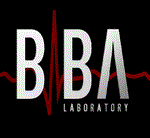Biological Systems Engineering, Department of

Biomedical Imaging and Biosignal Analysis Laboratory
Date of this Version
2009
Document Type
Article
Citation
EMBC 2009. Annual International Conference of the IEEE Engineering in Medicine and Biology Society, 2009. Pages: 491 - 494, DOI: 10.1109/IEMBS.2009.5332618
Abstract
Conventional blood flow velocity measurement using ultrasound is capable of resolving the axial component (i.e., that aligned with the ultrasound propagation direction) of the blood flow velocity vector. However, these Doppler-based methods are incapable of detecting blood flow in the direction normal to the ultrasound beam. In addition, these methods require repeated pulse-echo interrogation at the same spatial location. In this paper, we introduce a method which estimates the lateral component of blood flow within a single image frame using the observation that the speckle pattern corresponding to the blood reflectors (typically red blood cells) stretches (i.e., is “smeared”) if the blood is moving in the same direction as the electronically-controlled transducer line selection in a 2D image. The situation is analogous to the observed elongation of a subject photographed with a moving camera. Here, we develop a relationship between speckle size, scan speed, and blood flow velocity. Experiments were performed with a blood flow phantom and high-frequency transducer of a commercially available ultrasound machine. Data was captured through an interface allowing access to the raw beam formed data. Blood flow with velocities ranging from 15 to 40 cm/s were investigated in this paper. Results show that there is a linear relationship between the reciprocal of the stretch factor and blood flow velocity. Two scan speeds were used in our experiments. When the scan velocity is 64.8 cm/s, compared with the theoretical model, fitting results based on experimental data gave us a linear relationship with average flow estimation error of 1.74±1.48 cm/s. When the scan velocity is 37.4 cm/s, the average estimation error is 0.65±0.45 cm/s.
Included in
Biochemistry, Biophysics, and Structural Biology Commons, Bioinformatics Commons, Health Information Technology Commons, Other Analytical, Diagnostic and Therapeutic Techniques and Equipment Commons, Systems and Integrative Physiology Commons


Comments
Copyright © 2009 IEEE. Used by permission.